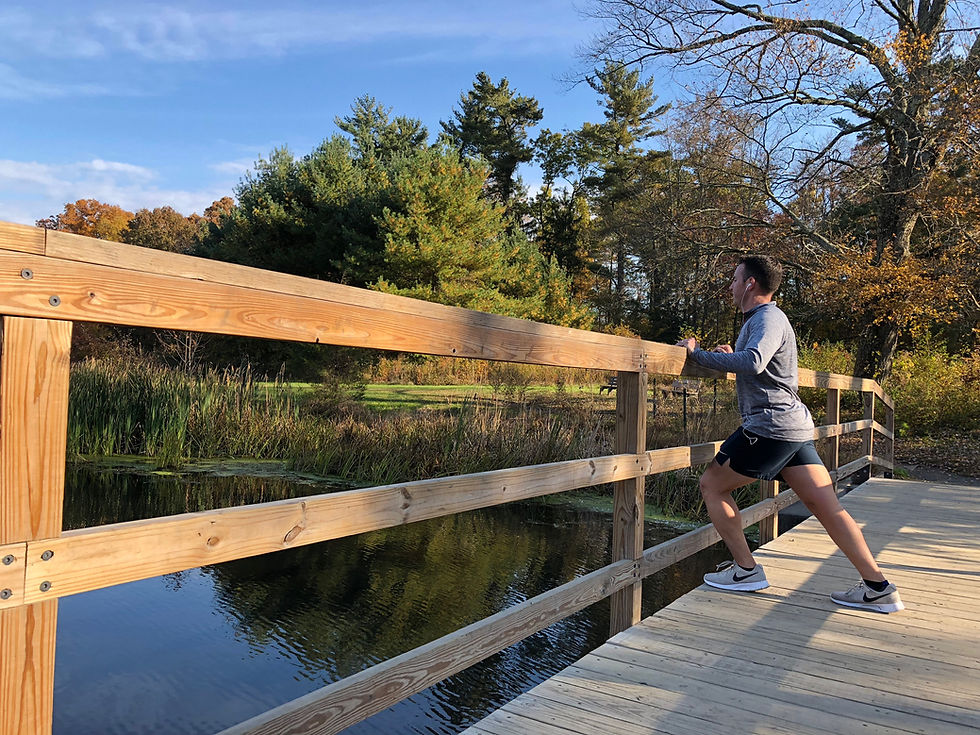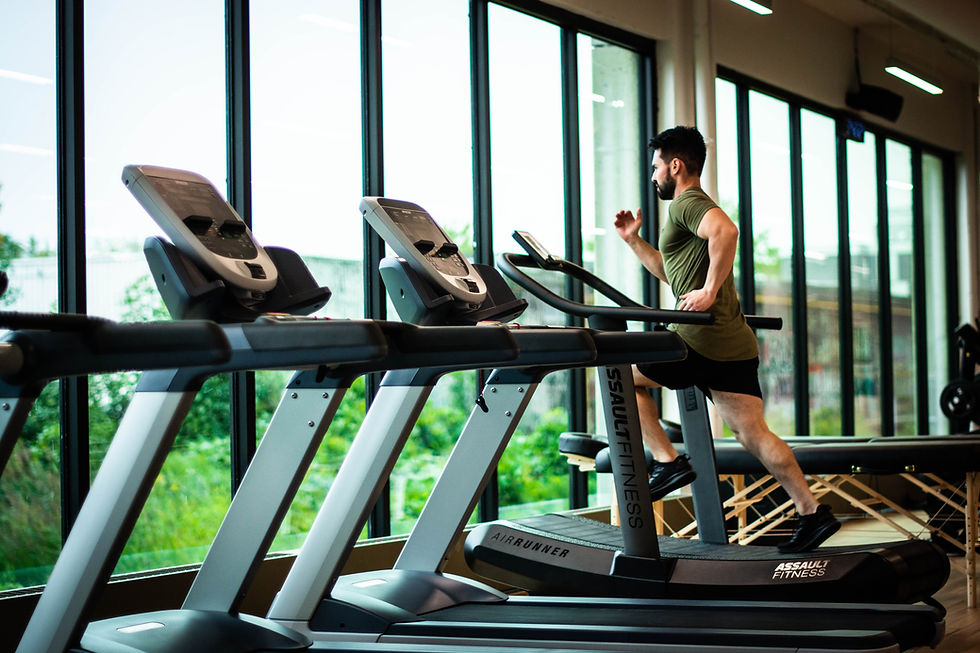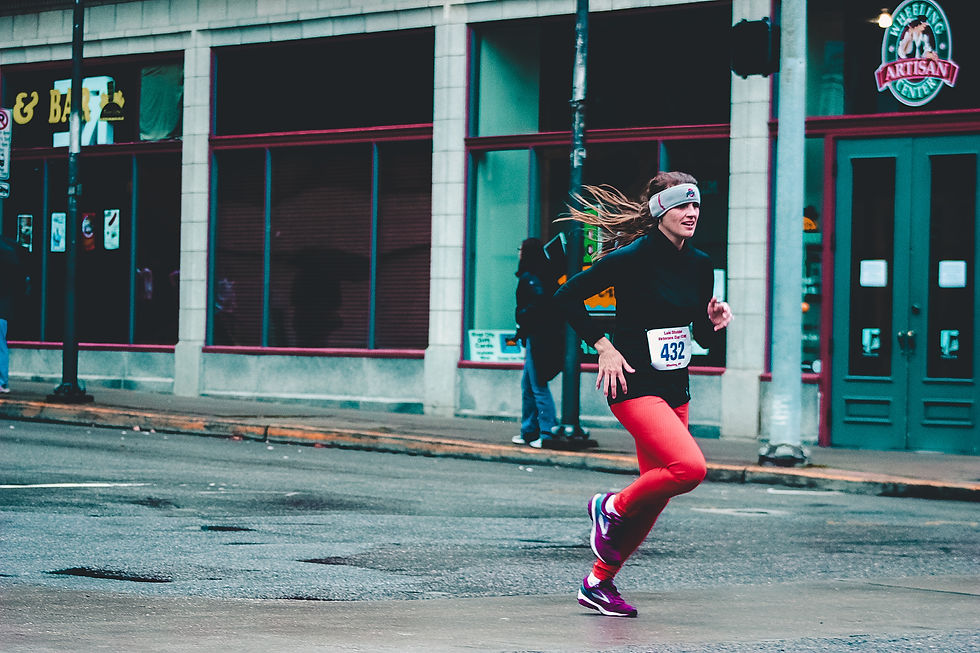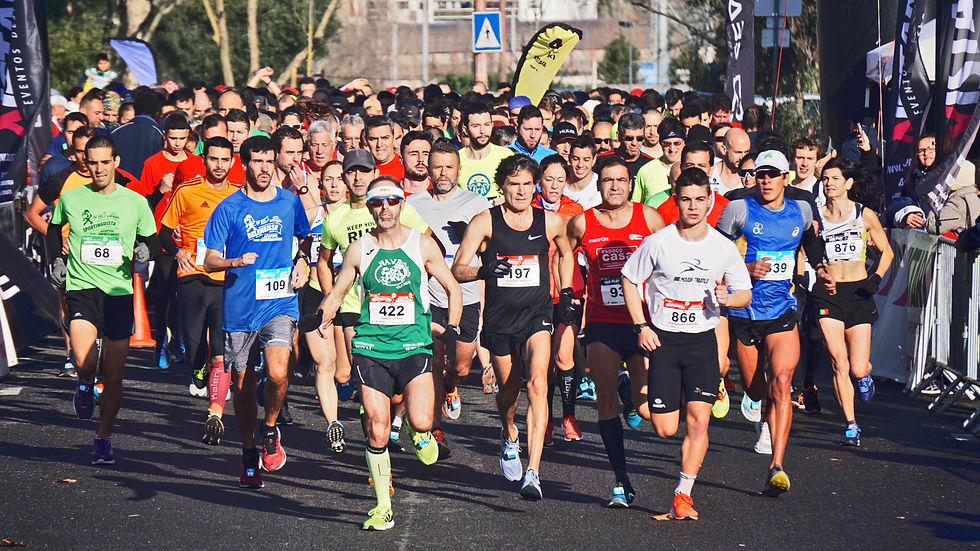This is a great time to start running! Whether a total newbie or getting back into it, the timing is perfect. Spring is in the air and the weather is great. And hey, if you feel that the walls are closing in on you right now, running may be the ideal means of escape! Personally, if I watch Frozen 2 one more time, I may consider the Forest Gump method of running...

I love running because it offers tremendous mental and physical benefits and there are only a few equipment requirements:
Clothing
Running shoes
Device that plays music
Rocky 4 soundtrack
Now that we’ve got our gear, we need to embrace that running can cause both sudden and “wear & tear” injuries. But try not to fret, as injury risk can be minimized. Here’s how to reduce the chances of being sidelined:
Starting Out
Run on non-consecutive days when possible (a definite for beginners). Try to run no more than 2 days in a row. This allows the body to fully recover from the previous workout.
When first beginning or resuming a running program, just focus on being out for about a 15-20 minute jog/walk. Each time out, try to walk a little less and less. Your first goal should be to jog for the entire 15-20 minutes without having to walk. Do this without regard to distance or time. When you can consistently achieve this a couple times per week, you are ready to progress.

It is better to run shorter distances with correct form than longer distances with poor form. Trudging along for a certain distance or time without regard to form stresses the joints. Running with good form improves muscle activation around those joints, reducing the stress.
Try this easy form drill: 1) Focus on your heel striking the ground before your forefoot. 2) As you transition from heel to forefoot to toes, remember to straighten your knee and press your toes through the ground as if you were hitting the gas pedal. 3) Squeeze your glute (your butt) and use it to actively propel yourself forward. Your mental cues should start when your heel hits the ground: “heel, toes, glutes.”
Focus on 1 goal at a time: either distance or speed, not both.
Choose 1 goal a week. If you are a beginner and your goal is to run a race, focus on distance until you are comfortably able to complete the mileage of the race, then shift your focus to speed. The training protocols for many longer distance races call for completing the race mileage for the very first time on the day of the race. That’s fine!- Focus only on distance during your training. Speed will gradually improve on its own (unless you are my wife). When you run your second half marathon, then you can focus on speed.

Cross training is insanely important. Strength training and yoga are the best choices, rather than other types of cardio. Build the strength to make it up that giant hill and gain enough mobility to really lengthen your stride.
Avoid lifting and running on the same day if possible, or at least spread them out. Probably best to lift before you run, in my opinion.
To avoid over-training, take a week off every 8-10 weeks. This rest week should be scheduled into your training from Day 1!
Keep in mind that running for the health benefits or for recreation is different than running for sport or for a race. With that being said, running 2-3 days a week, at a moderate pace, for about 1-3 miles, will yield substantial cardiac benefit while minimizing the risk of overuse injuries. Beyond this point, sure, there are benefits to be had, but those benefits become more incremental and the risk of injury sharply increases (diminishing returns). Running for sport is an awesome way to challenge yourself, but it is important to recognize that nutrition, hydration, sleep, maintenance and time demands will all increase in order to avoid injury and perform at the highest level.
Shoes
Change running shoes every 300-400 miles. Don’t go crazy keeping track of this. Estimate your weekly mileage and then figure out when you’ll need new shoes. Even the best shoes will not last forever. You’re welcome Jackrabbit.

Rotate your running shoes each time that you run. 2 pairs will do. They can even be the same brand, just not the exact same model.
Avoid Nikes unless you are fit by an expert. They just offer too many profiles, causing buyer confusion, and many of the models are not supportive enough. New Balance and Asics are safer bets. Additionally, I typically hear good things about Saucony, Brooks, Under Armour and Hoka as well.
Preparation and Recovery
Let’s get this out of the way: You should warm-up & cool-down. Warming up brings blood flow to the muscles that are going to be used, allowing them to become more supple and ready to move. Cooling down prevents blood pooling in the cardiac chambers, reducing stress on your heart. We’ve all heard this 1 million times. Needs to be said, so it’s been said.
Brisk walking or slow jogging can be your warm-up and stretching can be your cool-down.
Should I stretch? Should I not stretch? What’s the Deal?
Perform quick and fairly intense mobility work prior to running (foam rolling, lacrosse ball, massage gun, dynamic stretching).
Save your longer, traditional stretching for after the run (static stretching or yoga.)
Note that excessive stretching prior to a run will temporarily lengthen muscles, reducing their power and increasing the risk of injury during the run.

Order of operations
Warm-up (brisk walk or slow jog.)
Mobility Work (dynamic stretching, quick/intense- foam rolling, lax ball or massage gun) *If you swap 1 and 2, the world will not end.
RUN/Hit play on "Eye of the Tiger".
Cool-down (static stretching, yoga, prolonged foam rolling.)
Breathing
Mr. Miyagi was correct when advising Daniel-san to breath in through his nose and out through his mouth. As you breath in, your diaphragm (belly) should expand to fill with air and when breathing out, your diaphragm should collapse. This is ideal when warming-up and running at slower to moderate speeds. When running at higher intensities, this method will not allow you to breath in enough air as quickly as you need it. At this point, start breathing in and out using only your mouth. You'll also notice that now, your chest will expand more than your diaphragm, which is normal, allowing for quicker use of oxygen.
FAQ
Here are the most frequently asked questions I receive, from patients/clients who have run marathons, those who barely have walked a mile, and everyone in between.
Can I practice running on the treadmill? Yes, but the treadmill does not translate well to running outside. A treadmill is a consistent flat surface and when running on it, the larger leg muscles will fire in a very specific pattern and smaller stabilizers will not have to do much. Running outside, however, varies the pattern of how larger muscles fire and recruits more of the smaller, stabilizing muscles. Because of this, I would not recommend "hitting the ground running" on the first day of Spring and expect to run just as fast and far as you did on the treadmill. Your muscle recruitment pattern has changed and you will tire quickly. Also, be weary of entering an early Spring race, when the bulk of your training would have been done on the treadmill. This actually ties into a huge topic (Sports Specialization) that I will tackle in a future post!

Should I run every day? Ummm.. I'd rather you didn't. Taking days off and conducting light training days are not only necessary for injury prevention, but will enhance performance.
Can I run in any weather? Sure! The beauty of running is that it can be done rain or shine, as long as you’re properly dressed. What you want to be mindful of is drastic temperature shifts. It takes the body a week or two to adapt to temperature change. So when the temp changes + or - 20 degrees over a couple days, that is not the time to "PR" your mile." The classic example is pushing it a bit too much on that weird unseasonably warm February day, aka Winter 2020, and under-performing or developing a minor injury as a result.

Is running good for weight loss? Yes and no. Diet is really the best bet for shedding pounds. Yes, running burns about 100-150 calories per mile. But to me, it’s much easier to not eat one, 300-calorie cookie than to run 2 miles. Also, running will make you hungry, and chances are that you will eat more during your next couple of meals as a result. Really, diet and exercise are always, ALWAYS, meant to be done together.
How much water should I drink? Take your body weight and divide it by 2. Drinks that number in ounces of water, daily. On days that you run, add another 10 ounces per mile that you ran. Will you have to pee a lot? Yes, you will have to pee a lot.
Is carbo-loading a thing? Short answer: for most runners, No. For advanced runners, very gradual carbo-loading, with complex carbs, for weeks before the race may be useful. Eating a giant pasta dinner the night before the race, not so much.
How long should I wait after eating to run? Do not run right after eating. Give it 1-2 hours. We want blood going to the muscles that we need for running, not to our digestive system that is working on a double supreme burrito.
Should I log my runs? You do not need to write a novel, but it is helpful to know the approximate time, distance and pace of your runs. And yes, it’s a good idea to jot this info down somewhere. This will allow you to progress more accurately.
Should I get up early to run like my one crazy neighbor? Maybe! However, SLEEP is how we recover, heal and repair. If we are not receiving enough of it, we will not be physically ready for the next run. So if you are going to wake up early for a run, make sure that you go to bed earlier the night before. Otherwise, it’s not worth it.

Should I drink a recovery drink? One of the rare times that our bodies can actually make use of sugar is right after working out. However, the amount of sugar in most juices and energy drinks is excessive. Also, most of those electrolytes that energy drinks are so proud of can be found in many fruits and veggies. So, Gatorade or juice is fine, but maybe dilute it with water. Also, a piece of fruit and a glass of water would work too. While we’re at it, a little protein would be helpful here as well!
What are the most common injuries? Shin splints, plantarfasciitis, Achilles tendinitis, ankle sprains, hip joint injuries (labrum tears), knee arthritis, meniscus tears, patella tendinitis, patella-femoral pain syndrome, ITB syndrome, hamstring strains, hip flexor tendinitis, calf strains and stress fractures are most common. That sounds scary, but what I want to point out is that every single one of those is an over-training injury (with the exception of some sprains and strains.) My advice is almost always that we are going to take a few weeks off and then build a new program from scratch.
I find it hard to fit training into my schedule. Can a running program be 1-2x/wk? YES!
Thoughts on minimalist shoes? Minimalist shoes cause just as many injuries as traditional running shoes, just different types of injuries, some of which can be more serious (Achilles injuries). Also, changing to these shoes changes your running form. It takes a long time to gradually acclimate and if rushed, injury is likely to occur, especially to the Achilles tendon. I generally would only change a runner to a minimalist shoe if there were a physical or medical reason that they could not perform a heel strike (which is exceedingly rare).
Advanced runners
Weekly mileage should not exceed more than 3-times the distance of the race you are training for, in order to avoid over-training.

Advanced runners are not exempt from rest weeks. Remember to build your planned week-off into your training schedule ahead of time. For example, for a half marathon, chances are that you will need at least 1, and possibly 2, rest weeks scheduled into your training program.
Focus on 1 goal per session rather than each week. Also, advanced runners can mix inclines and terrain into the equation. Put it all together during a time trial once every week or two.
Conclusion
Running offers a variety of benefits, from aerobic conditioning to stress relief. The activity gets you outside and often bonds you with others. It is also very efficient, offering a great workout in a short amount of time, without requiring special equipment or a commute to the gym. Sure, there are risks, but apply some simple science to your workouts and enjoy success. I hope to see you out there! (I will wave from at least 6 feet away.)
Special Thanks to Charles Kull, for the great photos!


Comments